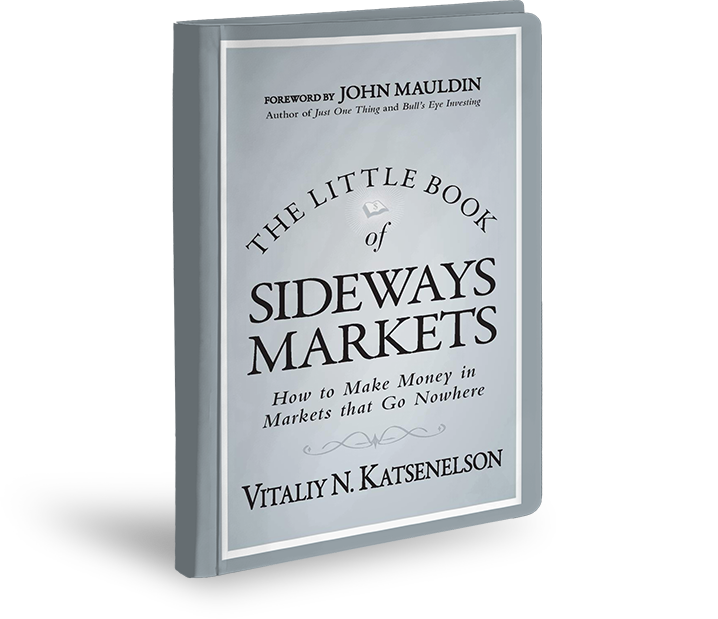The Little Book of Sideways Markets is officially out. It was a fun and interesting project. I took Active Value Investing (my first book), completely rewrote the first half of the book, added three new chapters (“Born Again Value Investor” is my favorite one), updated it to reflect the post-Great Recession economic environment, added new examples, explained some things differently (hopefully better), distilled it, and made it an easier read for a much wider audience. This book is not just written for professionals and serious investors but for “civilians” as well. I hope you enjoy it.
I did a short segment on CNBC’s Fast Money (it was cut short due to breaking news). I briefly discussed Medtronic (MDT) and L3 Communications (LLL) and did a lengthy segment with the very witty Josh Lipton of Minyanville fame.
The Little Book of Sideways Markets Makes Value Investing Come Alive
(Little Book was reviewed by Brenda Jubin on Seeking Alpha. Disclosure: I’ve never met Brenda, nor did I kidnap her kids in return for this very kind review.)
Vitaliy N. Katsenelson’s The Little Book of Sideways Markets: How to Make Money in Markets That Go Nowhere (Wiley, 2011) is thoroughly enjoyable, not so much for the message as for the thoughtful and often entertaining way in which it is delivered. It is part of the “Little Book Big Profits” series that began with Joel Greenblatt’s The Little Book That Beats the Market in 2005 (recently updated) and now includes fifteen titles.
Katsenelson’s hypothesis is that we will likely be in a sideways market, personified by the cowardly lion, “whose bursts of occasional bravery lead to stock appreciation but are ultimately overrun by fear that leads to a descent,” until about 2020. (p. 3) His reasoning is that we are experiencing earnings growth but continuing P/E compression: the gains we get from earnings growth are wiped out by a decline in P/E ratios. Even though there can be a lot of cyclical volatility, over the long haul stock prices will stagnate. Until the 12-month trailing P/E falls “significantly below the historical average of 15” (by mid-2010 stocks were trading at more than 19 times 2010 earnings) the sideways market will continue. (p. 27)
If this hypothesis is borne out, buy and hold (never a great idea in any environment) absolutely must be replaced with buy and sell. “A disciplined sell process injects a healthy dose of Darwinism … into the portfolio, weeding out the weakest stocks—the ones that have deteriorated fundamentals or diminished margin of safety—in favor of stronger ones.” (p. 164) That is, once the reasons you bought the stock (valuation, quality, and growth) have disappeared, sell and move on.
Katsenelson takes his reader step by step into the mind of the value investor by relating, in a fictional addendum to Fiddler on the Roof, the story of Tevye’s purchase of Golde, the cow. He also describes his own big-time gambling evening (he was willing to lose a maximum of $40) and that of a half-drunken, rowdy fellow blackjack player to stress the importance of process. He then moves on to the fundamental principles of active value investing.
What differentiates this book from so many others on value investing is that it describes, sometimes through the use of case studies, the thinking of a value investor. Not just his models or his metrics but his assessments. Katsenelson is an empiricist who weighs facts, looks for contraindications, and makes decisions. He makes value investing come alive.
This may be a little book, but it’s packed with insights for both novices and experienced investors. And it is a delight to read.










0 comments